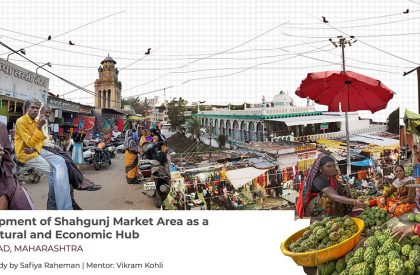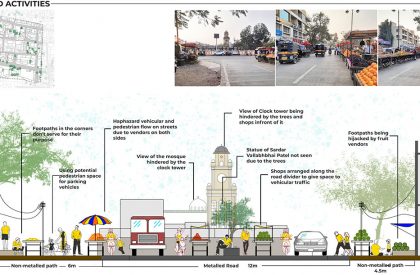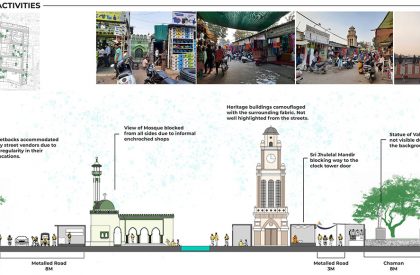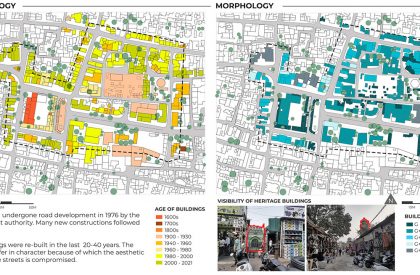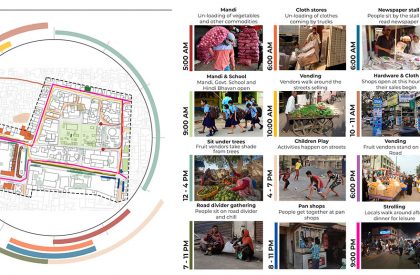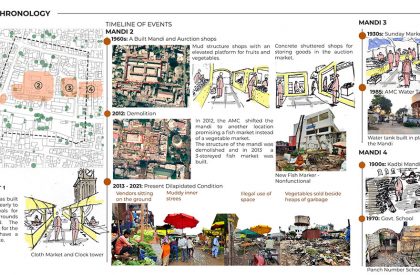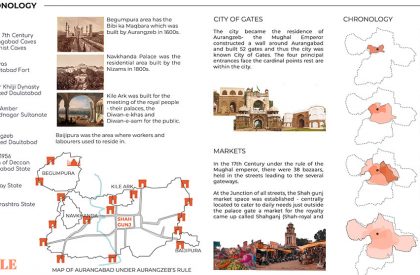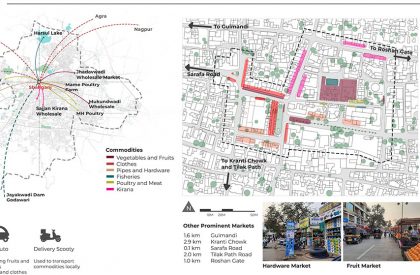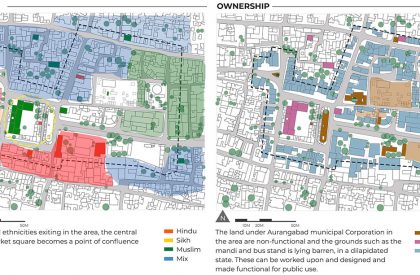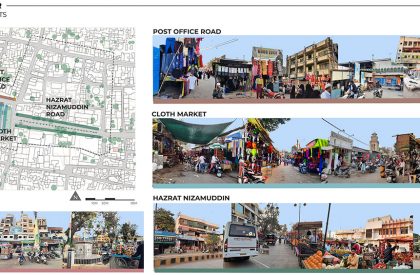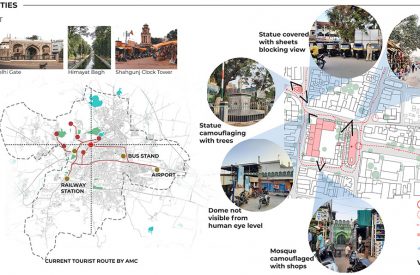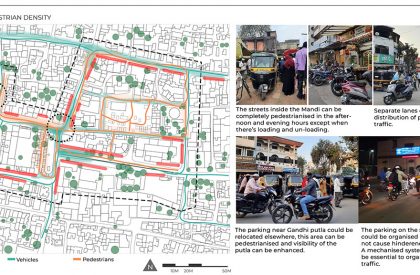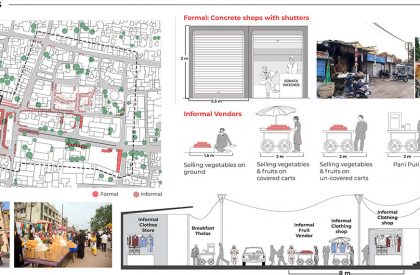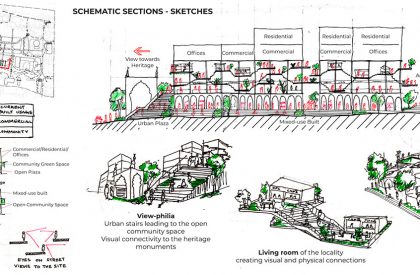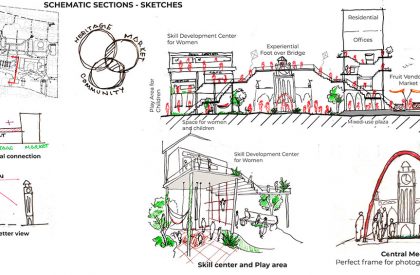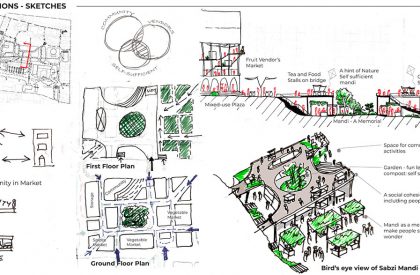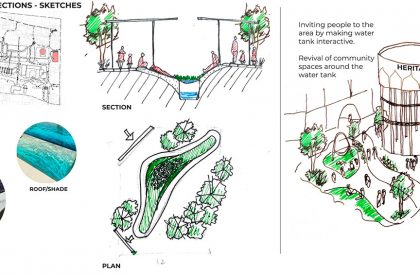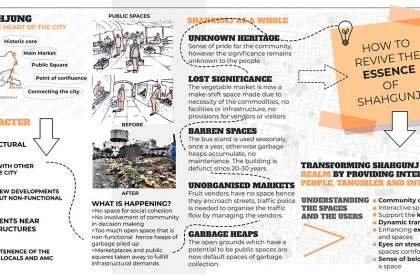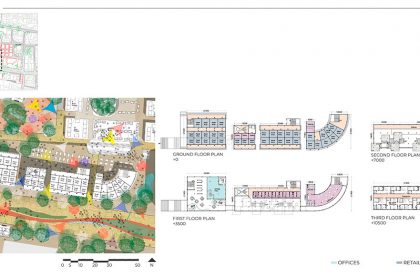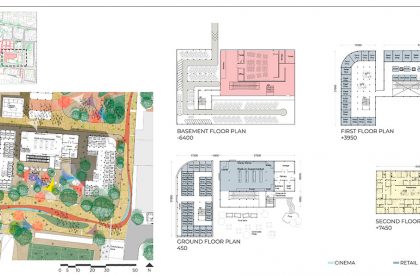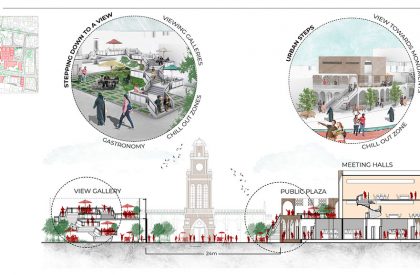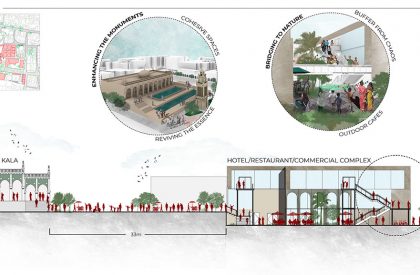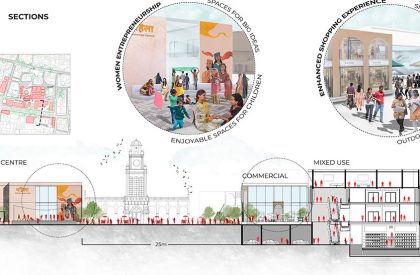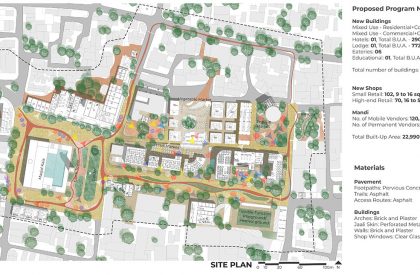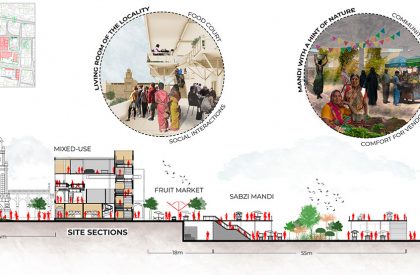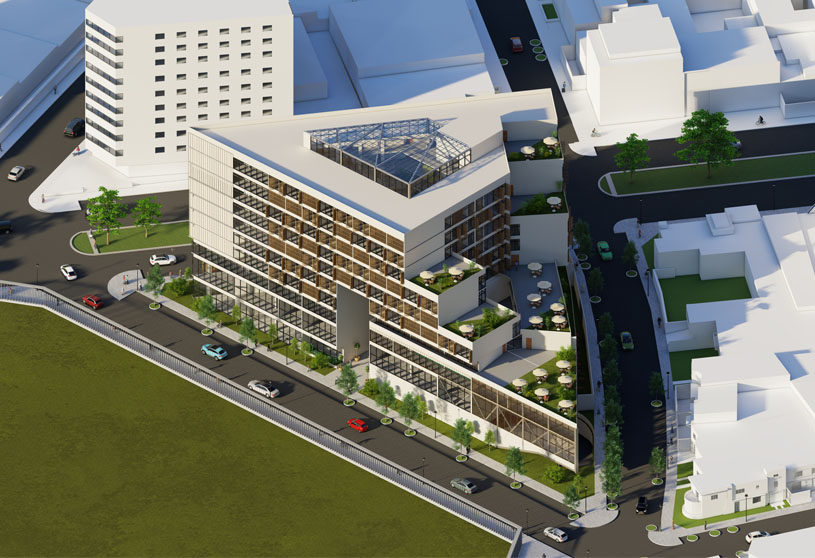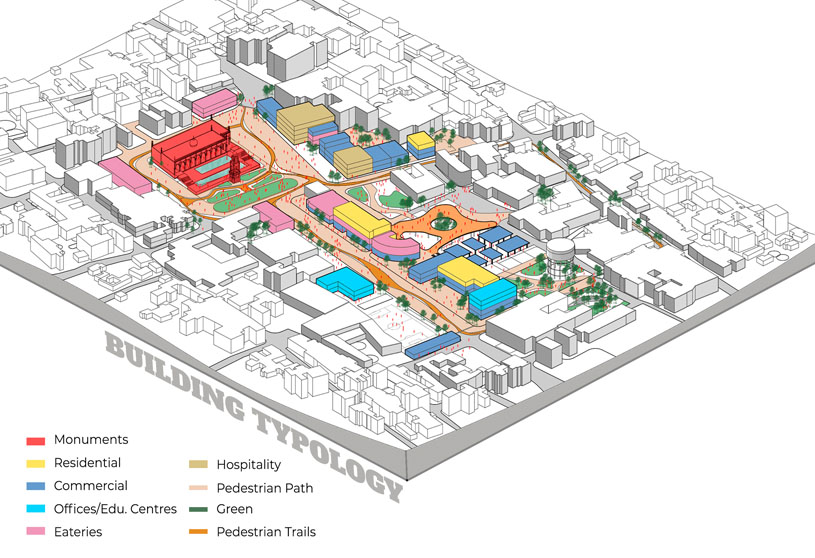
Excerpt: Lost Spaces of our Cities, an architecture thesis by Safiya Raheman from School of Planning and Architecture – Bhopal, intends to integrate many elements of a public realm to create a design for the Shahgunj, a mediaeval market in the city of Aurangabad, India. The thesis aims to design a historic marketplace integrating various aspects of the public realm, and in the process brings attention to the issues that face our historic cities, such as their majestic yet fading history, their surviving culture, and the demise of their once active social life.
Introduction: Markets have always been a crucial component of any city. Beyond being useful, they operate as hubs for the city’s citizens’ social and cultural cohesion and its economic growth. A market is defined by its social components, or society and all of its external influences on it from institutions, culture, and physical structures. Economic factors, such as regional trade on a local and international level, and cultural factors, such as the people who live there, their interactions, and the circumstances that support such interactions. If any public space is to prosper, these characteristics must be given priority while planning the area’s built and unbuilt components. The objective of this architecture thesis is to integrate many elements of a public realm to create a design for the Shahgunj, a mediaeval market in the city of Aurangabad, India.
Save
Site Context
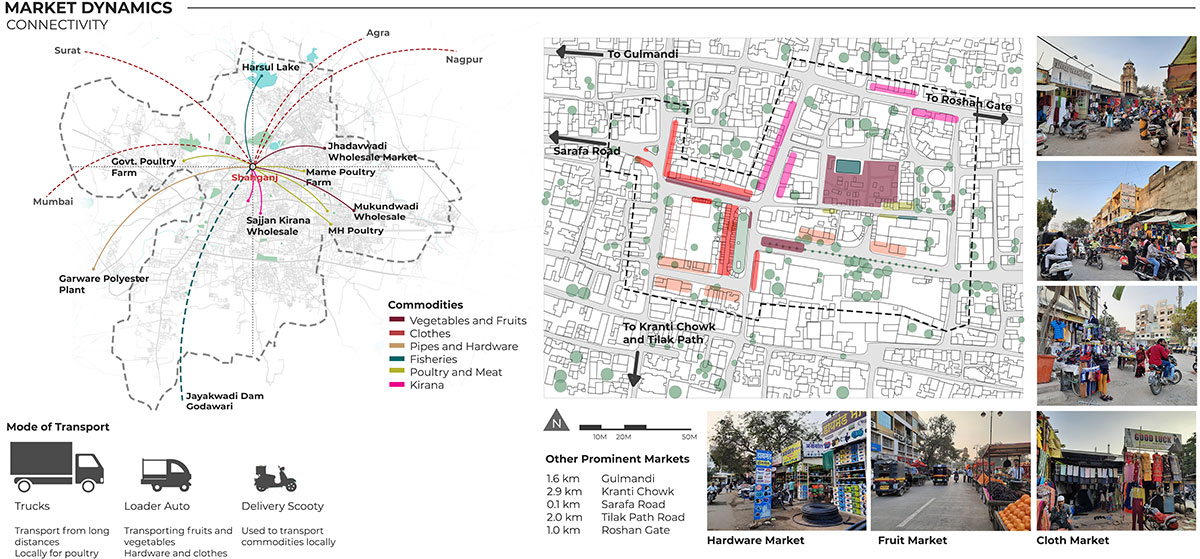
Aurangabad, the former capital of Maharashtra, is where Shahgunj is located. Malik Amber of the Nizam Shahi Dynasty of Ahmednagar founded it in the 17th century as a bazaar for royalty where vegetables and cereals were sold to locals as well as businessmen from other areas. Among the many historically noteworthy structures on the grounds are the Kala Mosque, the Clock Tower, and the Vegetable Market.


Because of its strategic position within the city, it swiftly turned into a marketplace where merchants, commoners, and nobility interacted. Since then, it has changed into a bustling urban hub with local neighbourhoods for habitation, infrastructure for commercial and mixed-use uses, and active marketplaces.
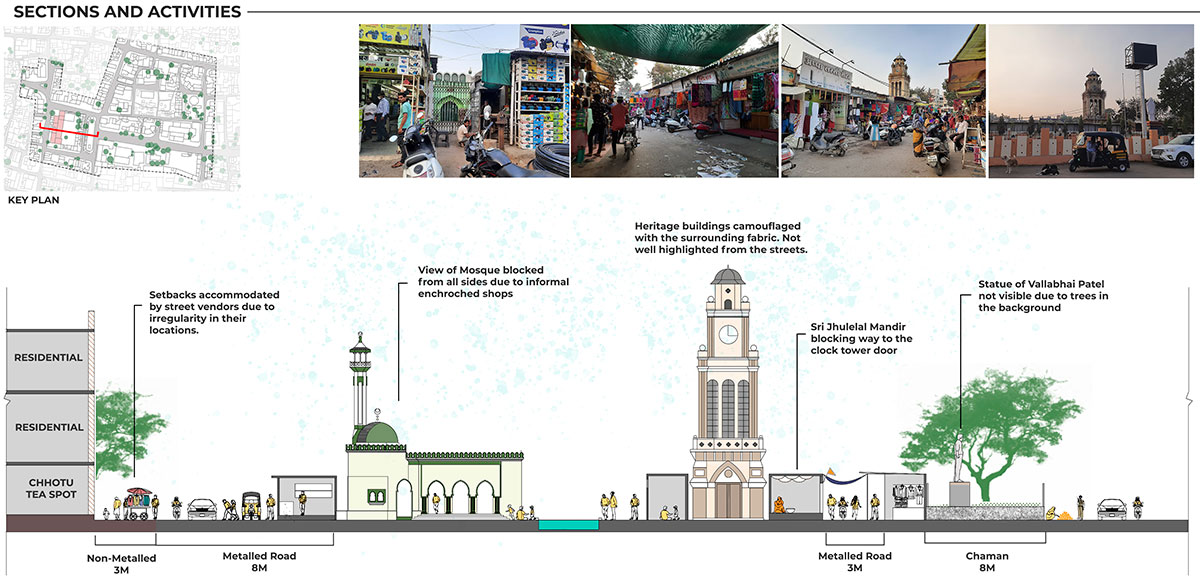
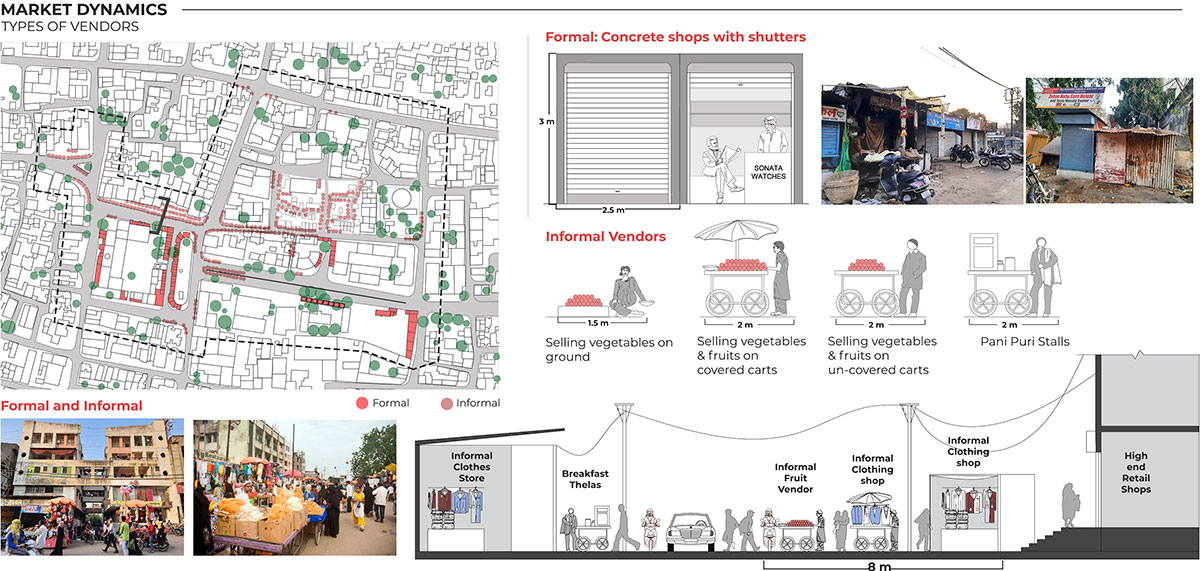
This region not only acts as the social hub and the cornerstone of the city’s public identity, but it is also the geographic centre of the city. It serves as an excellent example of an urban region that upholds the ideals of a thriving urban neighbourhood with residential neighbourhoods, buildings with mixed uses, significant local markets, and commercial hubs. But due to a number of issues, such as a growing population, infrastructure demands, poor management, municipal and governmental disinterest, etc., the land has vacant spots. These locations have the capacity to grow into dynamic public spaces where people can congregate and communicate. The objective of this architecture thesis is to improve the current activities and programmes on the ground while also better understanding the concrete and intangible elements that make up a community and its wellness.
Final Outcome
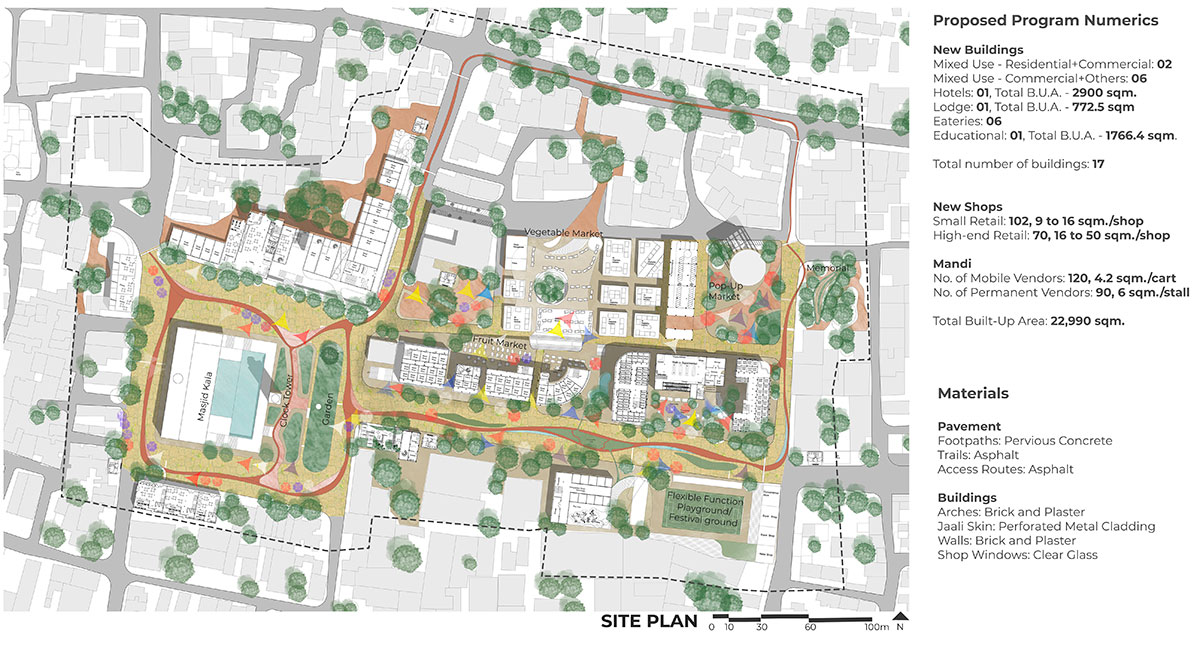
Urban Scale: The architecture thesis makes an effort to give the neighbourhood places to associate with by increasing the amount of third and fourth spaces for placemaking at the urban scale. There are numerous religious ethnic groups in the region, thus locations that may be used for religious festivals were built in various places based on where they would be.
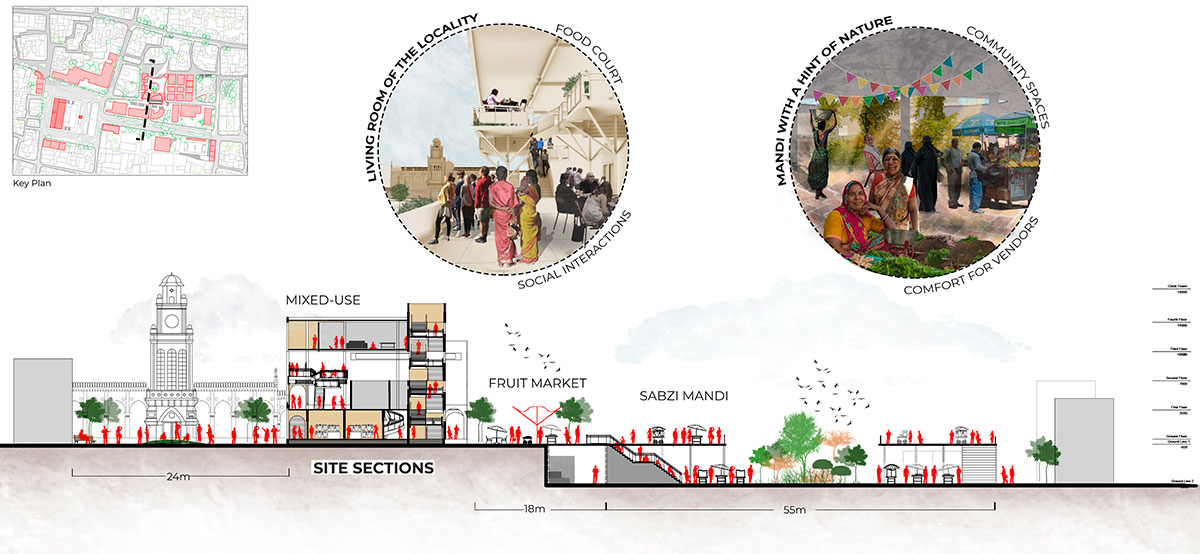
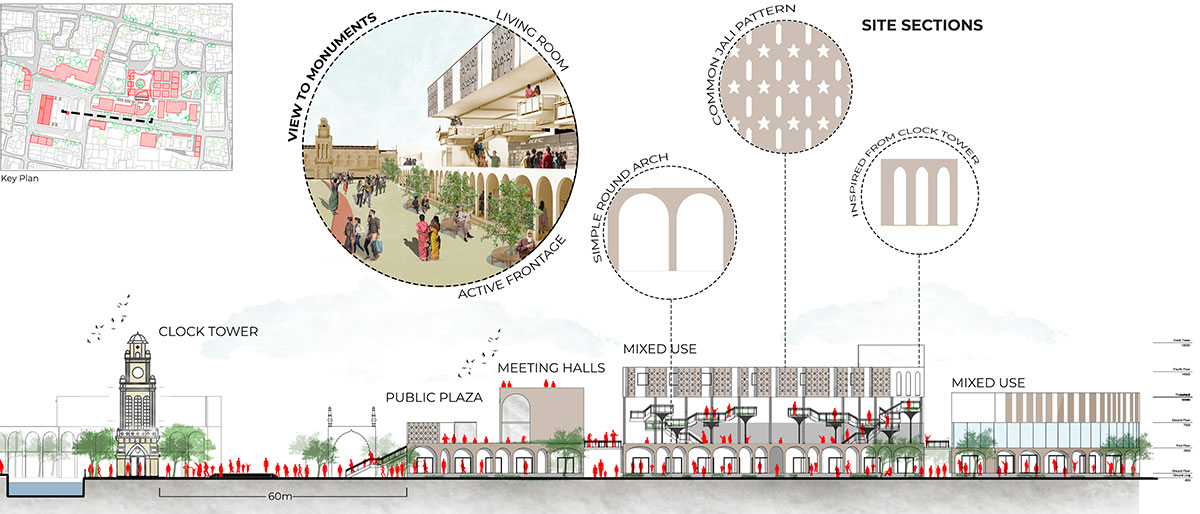
The Fruit Market is connected to the Vegetable Market (Sabzi mandi) by a podium, which was built to house community events in addition to the historical vegetable market. The platform would house food trucks and act as a playground for children and teenagers. An outdoor theatre would be built as a result for community gatherings and events.
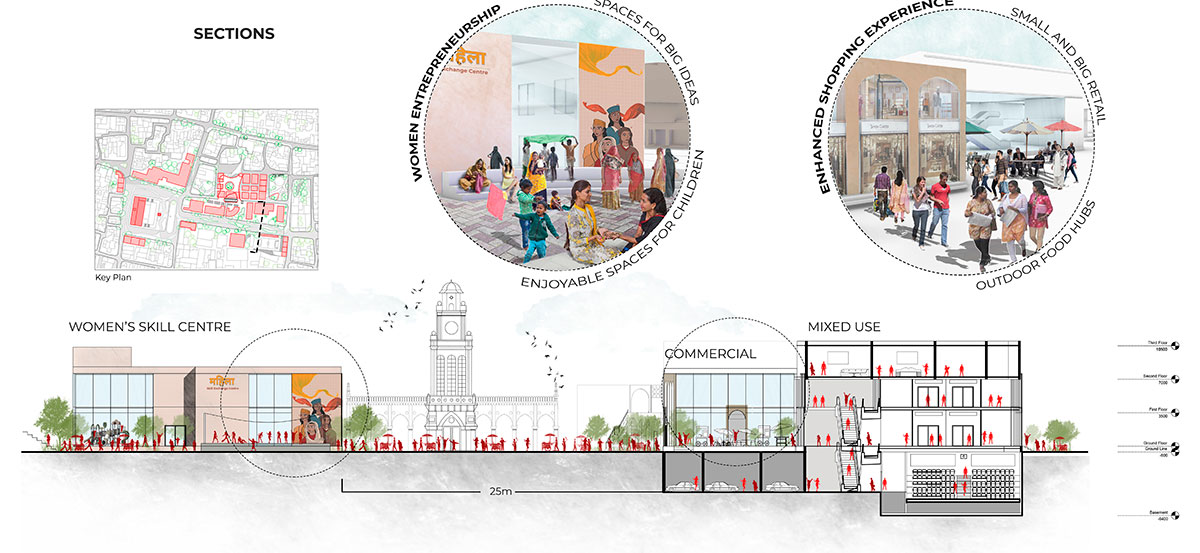
Building Scale: Buildings on the main street, Nizamuddin Road, were constructed with open galleries and food courts at various levels to underline the dynamic nature of an Indian market. Visitors can get a sense of place by having visual connectivity to the main road and the fruit market in these spaces, which the locals refer to as the living rooms. The project consisted of a total of 22 structures, each of which was planned according to market realities for a specific activity or function. The old structures were totally reconstructed to take on the existing responsibilities of residential, commercial, offices, and retail.
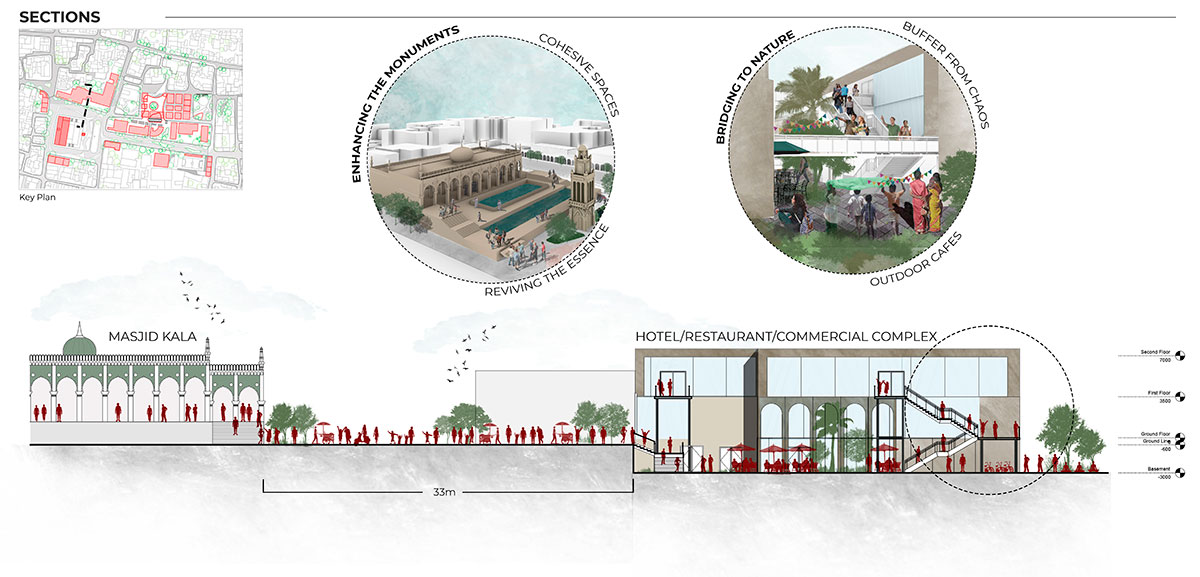
“Lost Spaces of Our Cities” is more than just an architecture thesis; it is an attempt to bring attention to the issues that face our historic cities, such as their majestic yet fading history, their surviving culture, and the demise of their once active social life.

India’s multiple rehabilitation initiatives are a shining illustration of how callously these significant regions have been treated. An Urban Heritage Precinct’s significance and character are generally lost during the process of building for a “better” future. A crucial design method is to comprehend the impacts these locations have on the neighbourhood, including improved quality of life, a stronger sense of place, sociocultural interactions, physical and mental well-being, economic growth, and increased safety. We would learn more about the requirements of the population and less about the need for infrastructure if we designed at their expense. The main aim of the project was to understand these spaces, the surrounding area, and the intangibles before designing for them. The purpose of the architecture thesis is to show future generations how to create significant urban areas carefully and, ideally, to encourage other members of the fraternity to follow suit.
[This Academic Project has been published with text submitted by the student]
To submit your academic project for publication at ArchiDiaries, please visit the following link >> Submit












